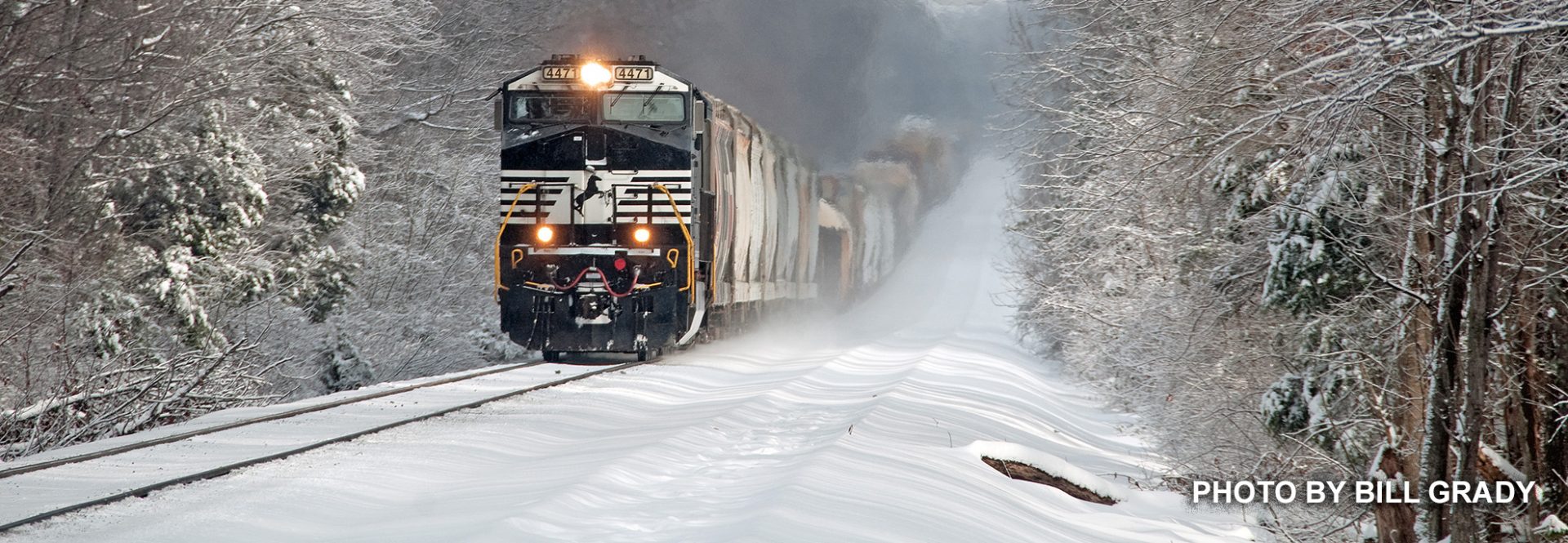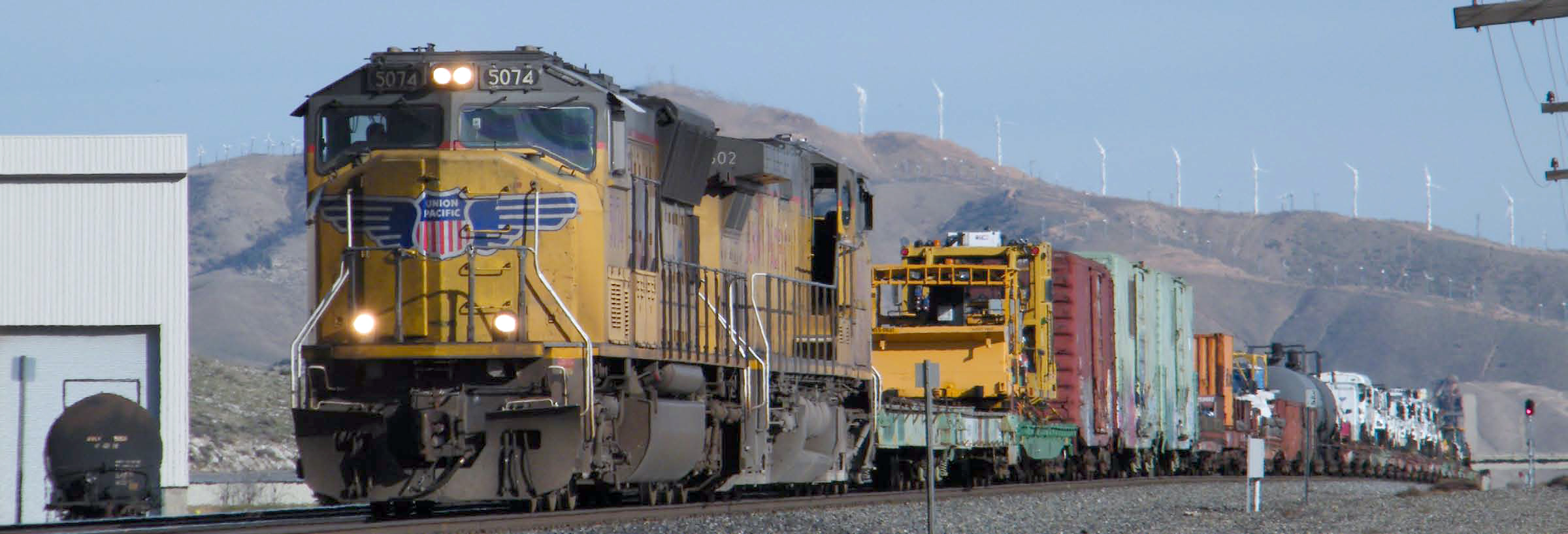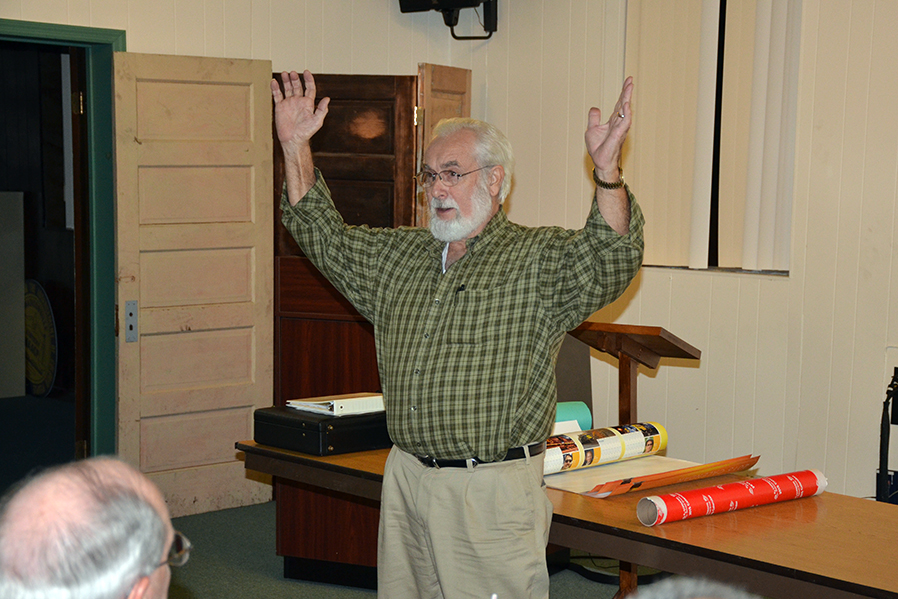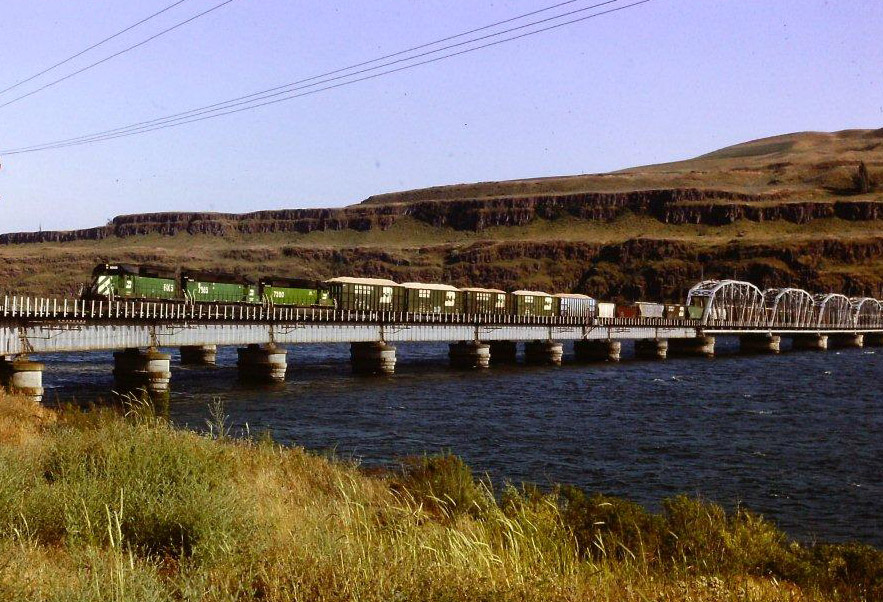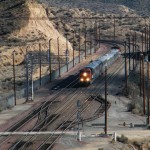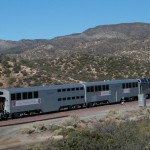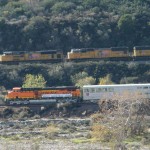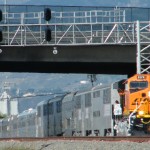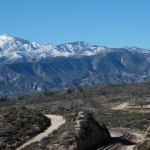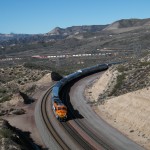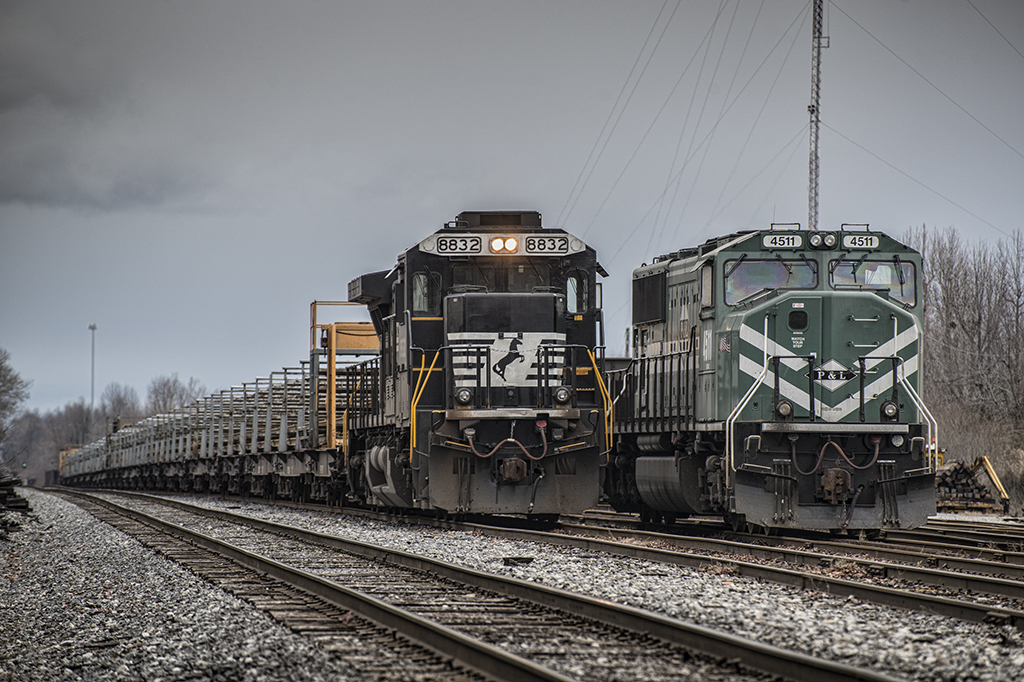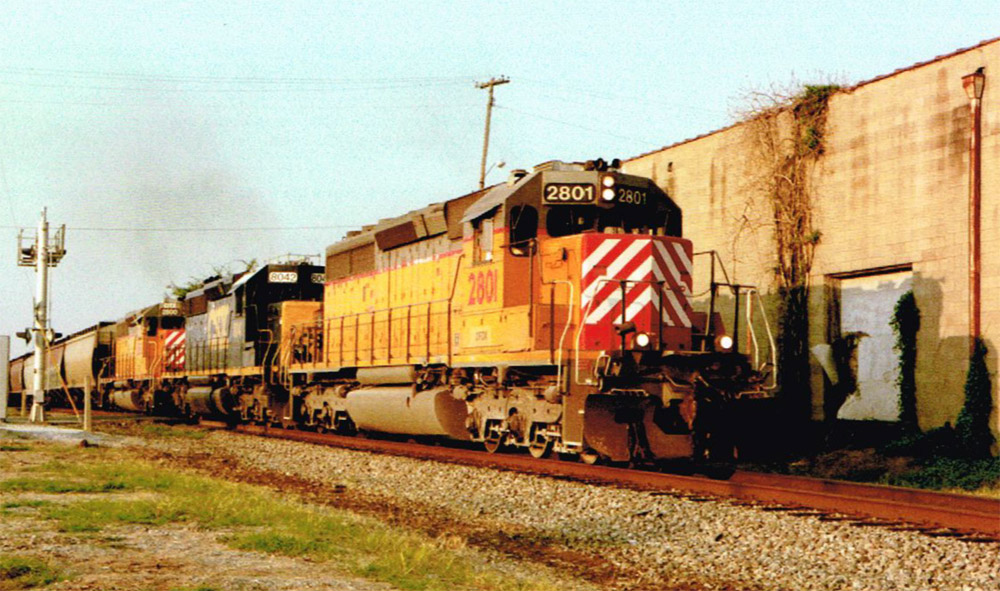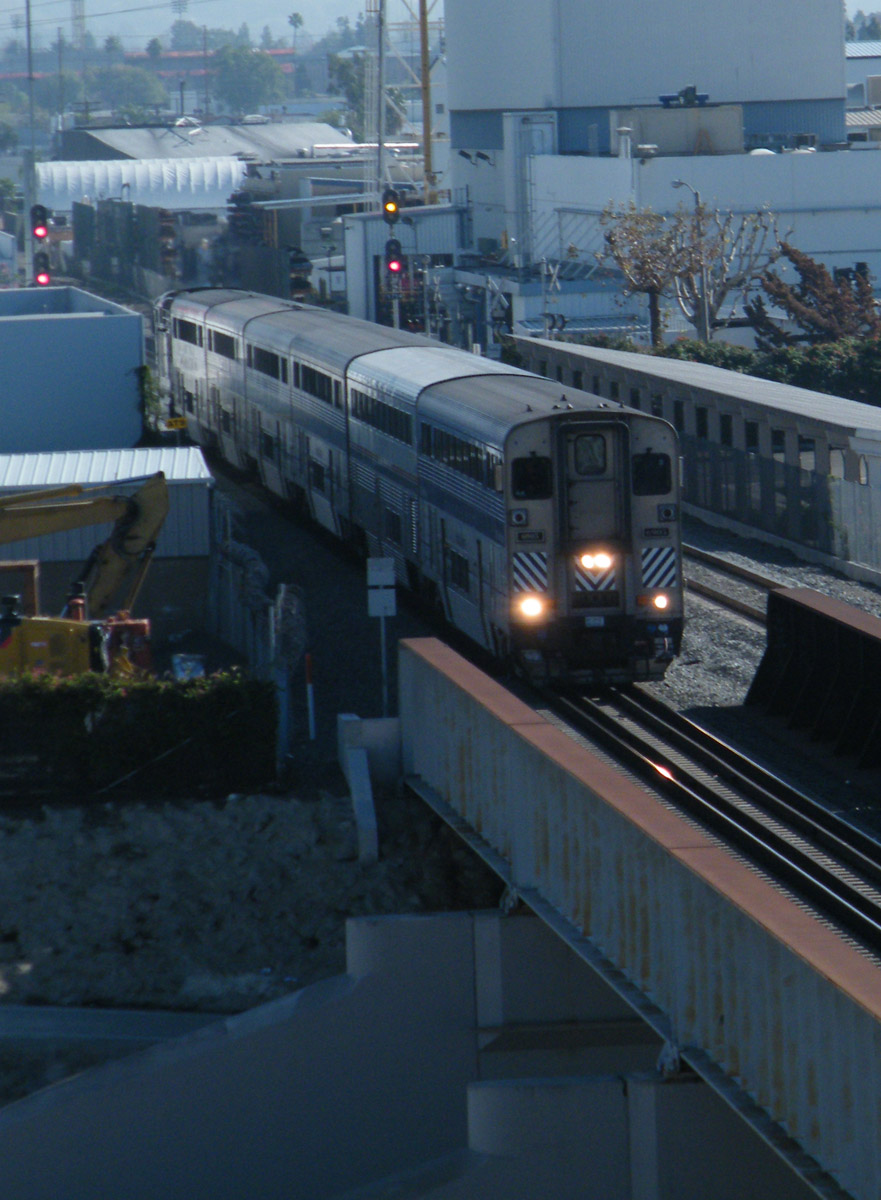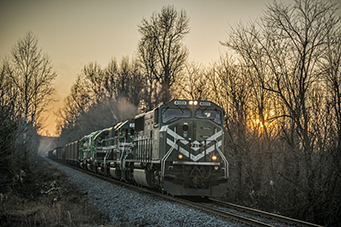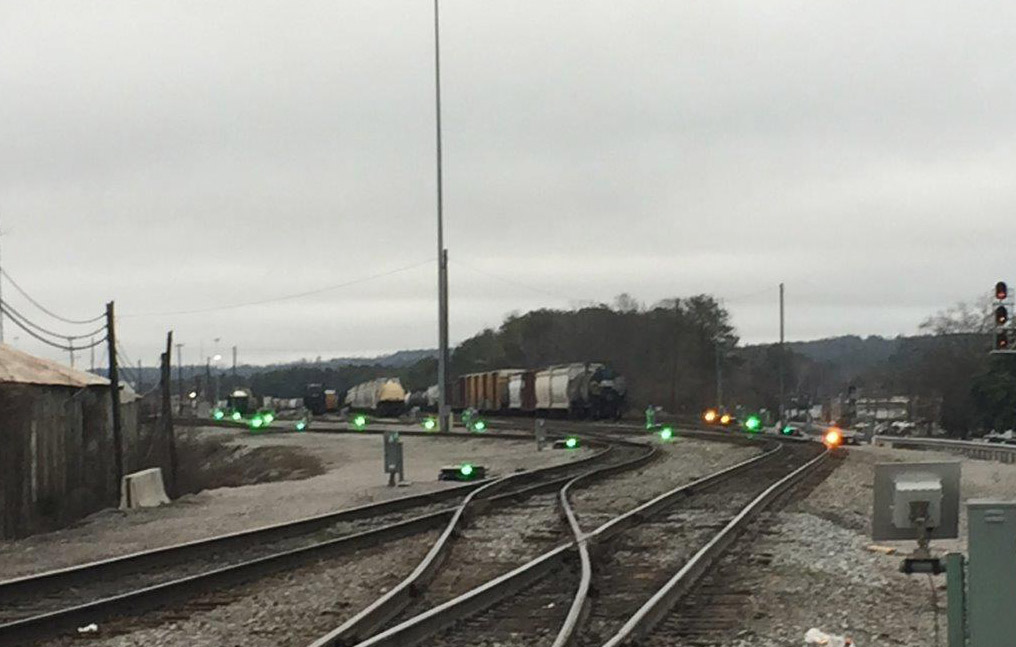A Union Pacific MOW train makes its way into the town of Tehachapi, CA. on the afternoon of February 1st, 2015. I had spent about 3 hours in Tehachapi waiting on trains and none had come by. This train rolled into town right as I was about to leave and, once I saw what it was, I knew why the tracks were silent. So, I snapped my shots and headed back towards Anaheim via Mojave where there were a few trains sitting in the yard wasiting to move, but not many. – Matt Gentry
Author: Jim Pearson
Gold-N Chees on the Central of Georgia Shortline conglomerate Genessee & Wyoming is making gold out of cheese and peanut butter in Columbus, GA. Two Columbus & Chattahoochee Railroad SD40-2s painted in the GWI family scheme rest up next to Lance Snack Foods plant in Columbus on 18-Jan-2015. – Chris Dees
By Bill Farrell, Chapter President
We are heading into our second month of the New Year and things are looking great. We had an informal executive board meeting at the Ideal convenience store in Nortonville on January 31st. This was in an effort to save time at our regularly schedules meetings. The two hours the officers spent in that meeting were well worth the time. We worked on the club calendar for this year and tried to remove any obstacles or duplications that might occur in the next 11 months. With that said, anything we worked on or put on the 2015 calendar is subject to approval by the membership, at a regularly scheduled meeting.
In the board meeting we discussed the possibility of what to put in the second case in the Parkway Plaza Mall. One thing led to another and before we knew it we were talking about a back drop in the display case with pictures of all the train stations in Hopkins County printed on it. We decided to contact WTTL radio station 106.9 fm to see if we could be on, “Coalfield Comments”. Wally has most of the pictures of all the stations but there are a few that eluded him. So Wally, Ricky, and I will be on the show Monday, February 16th at 8:00 am. The show will be hosted by Lori Pendley, an executive with the station. Our pitch will be to explain what our chapter is all about and to get the word out that we need pictures of Hopkins County railroad stations (the ones Wally is missing). Be sure to listen in on the 16th of this month.
March is one of those months that you never know what the weather is going to bring on any given weekend. The board is looking at a one day trip to the National Transportation Museum in St. Louis, MO. next month. This is something we can discuss in the next meeting and decide if it holds any merit. Most of the board members said they had been there before but it has been a long time ago and they would like to go back. This is an event that we can move anywhere in the month of March, if the weather doesn’t suit us. We can leave early on a Saturday morning, carpool together and get breakfast along the way. I think if we all kick in for gas of the vehicle we are riding in, it would work. If your wife has any interest in our hobby, invite her to make the day long outing with us. I will be in touch with the museum this week to see if there are any discounts for the membership.
Our video library is coming together real fast. If you have any railroad related DVD’s that you wouldn’t mind in the library bring them to the meeting so we can get them cataloged in the case. At the present time we have twenty DVD’s cataloged in with room for another sixty five. We need to discuss how many videos a member can check out at one time.
If you know someone who is in good standing in the community and has interest in railroading or model railroading, please invite them to the February meeting. Organizations such as ours eventually “falter and fail”, without membership growth. We also need, “Show and Tell” items for the meeting. Do you have a raffle item?
Our guest speaker was Butch Vanderveer, a retired CSX locomotive engineer. Butch told stories of his days as an engineer with the railroad. There was a Q & A session which proved very interesting with lots of questions.
Our guest January 19th was Chris Taylor, from Oak Grove, Kentucky. Chris is a person who served 22 years in the US Army. He seemed very interested our organization and I think we will be seeing more of him in the future.
The club gave Bill Farrell the go ahead to look deeper into the Modular “O” Scale layout. The layout can be used at all type of events and where ever we are invited to set it up. Members who desire to build and or landscape a modular will be given the chance. We still have more details to work out in the future.
Wally talked about the possibility of having an open house at the depot this spring or next fall. This opened up conversation on would we need liability insurance to cover this activity with the City of Madisonville or any other city we set up at. Wallace and Ricky are check into this and report at the next meeting.
Do to health reasons Wallace Henderson feels like it is time to step down as our NRHS Representative. The membership nominated Ricky Bivins to finish out Wallace’s term this year.
We are going to try to start a video library for members only. Tommy Johnson will head this project up and members will supply the DVD’s for the library. We hope to have 50 to 60 DVD’s in the case.
Three membership chairpersons, Thomas Bryan, will serve the Henderson area, Ricky Bivins will serve the Hopkins County area, and Steve Miller in Christian County.
Steve Miller will start looking for a rail trip for the membership this spring or next fall. There was also talk of going to the train shop in Louisville in February so we can all see Matt Gentry, who works for Athearn Inc, in Calif.
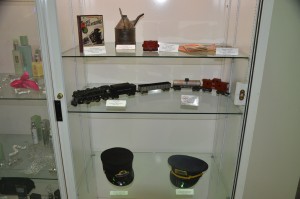 Well, the New Year is finally here and I have had several members already working hard on new and old projects. I would like to take this time to thank Tommy Johnson for his Presidency and leaving our organization in good shape. I would also like to thank everyone who attended the Christmas Party in December. We had the numbers we needed for the room at Brother’s BBQ, and everyone seemed to have a good time.
Well, the New Year is finally here and I have had several members already working hard on new and old projects. I would like to take this time to thank Tommy Johnson for his Presidency and leaving our organization in good shape. I would also like to thank everyone who attended the Christmas Party in December. We had the numbers we needed for the room at Brother’s BBQ, and everyone seemed to have a good time.
By the time you read this club bulletin we will have placed railroad artifacts in a display case at the Parkway Plaza Mall. Please stop by the Mall, and take a look. In a few months we can change out the display and involve other members in providing railroad artifacts for display.
I would like to put an emphasis on membership for the year of 2015. I think a reasonable number would be eight (8) new members for our organization this year. I have talked to three of our members and they have agreed to serve on the membership committee. We will have one each for Henderson, Madisonville, and Hopkinsville. If we retain the numbers we had last year then I know we are up one new member. All we need is another seven prospects in order to meet the set goal. If any members know of a person who likes trains or model railroading, please invite them to our next meeting on January 19th, 2015.
I would like to say that Matt does a good job with our bulletin but he is at a disadvantage with two thousand miles between the Madisonville and the west coast. He really needs our help providing information and pictures for the bulletin. If you have anything of interest please forward it on to Matt, you can email him at, info@westkentuckynrhs.org . Remember the only way we can have a good bulletin is that the membership provides Matt with the information.
I have several other new projects in mind and will bring them up at the January meeting or in due time.
Bill Farrell
Here’s a sneak preview of a slide show I’ll be doing this Spring for the chapter. Location: Wishram, WA. The Spokane, Portland & Seattle RR built this bridge to access Eastern Oregon. Eventually became key to the Inside Gateway to California, and now an important segment of the BNSF. That’s Oregon on the other side. The river runs from left to right, and the impoundment is from the Dalles Dam, which buried Celilo Falls. The falls was the site of historic fishing for the indians, using hand held nets, while standing on rickety platforms.
The train was Northbound now heading West for Vancouver, Washington, about a hundred miles downstream. If you look close, you can see bridge pillars that could have allowed the train to swung to the right or East and enter Wishram Yard, or continued on to Pasco, Washington and points East. – Gary Ostlund
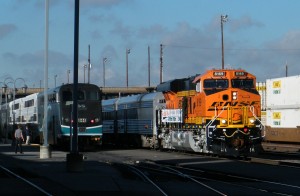
I believe that I can honestly say that I have never actually chased a train before. I know there was an attempt the first time I went to Gorham, Il with Rick, Wally and Thomas when I also first met Gary Ostlund. But that was short lived. That story goes that a Union Pacific special move came down to Gorham with one heritage locomotive on each end and three passenger cars between. Arrived at Gorham, stopped for a brief moment and promptly raced back to St. Louis. After we got our photos and decided to try and catch it up at Jacob, it was long gone. So no, not a true chase in my mind.
Well, once again my co-worker, Craig, was in the know about a special BNSF passenger move that was to happen on December 13th. It did help that he knew about it because he would actually be on the train. Its route of travel would be to leave San Bernardino and head up to Summit in Cajon Pass. Once there it would reverse down (once again having one locomotive on each end) back to San Bernardino where it would unload its first patrons and load again for a second trip.
A little note to what this special was; this train was brought down from Washington state as it is used up there as an annual Holiday train for kids of Military Families. So it’s really a pretty cool deal. I’m not sure who manages to bring the train down to San Bernardino but it is brought down and essentially used for the same purpose, but I believe this is just for under privileged kids and not specific to Military Families. Sunday December 14th, the train picked up kids battling cancer and other life threatening diseases from City of Hope, a cancer hospital, for a short excursion and Monday December 15th, the train picked up preschool kids from Victorville, CA and made a run all the way to Barstow, CA. I would have really liked to chase it that day as both locomotives were on point.
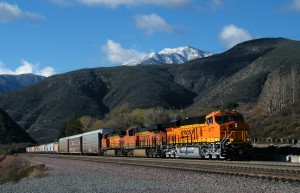
December 13th was a Saturday and as luck would have it, I had an open schedule. Let’s face it, my Saturday’s have been whatever I want them to be since I’ve moved out here. It’s pretty nice. So I figured what the heck, I’m going to chase a train!
The trick to this was that I had never really been up in Cajon pass before so I had no idea where I needed to go for photos or even where I could go since I don’t have an SUV or a truck. So Saturday December 6th I made a day of going up into Cajon just to see where I could and should go. So this day I made a couple stops but the first problem was there were no trains! I was in the pass for about four hours and there were no trains! NONE! I couldn’t believe it!
The second problem? Well, as luck would have it, while I am up in the pass scouting things out, I notice a white truck start approaching me while I was standing trackside, but it wasn’t a railroad truck, so I thought nothing of it. Well, the guy drives up and I notice its some security firm. He asks if everything is ok and I reply that everything is good. His demeanor quickly changes telling me I have to be 60 feet away from the track at all time. Yea, I know what that means, you will be watching me no matter where I go now. So luckily it was getting dark and I just decided to head back to Anaheim. But, I did get an idea for where I needed to be the next weekend, so it wasn’t a total waste.
Well, December 13th came and I find myself standing on the platform awaiting the arrival of this special excursion train. The weird part I first noticed was that trains were EVERYWHERE which I have never witnessed at San Bernardino before, but I just passed it off and continued to wait. Not long after, I see a sparkling clean ES44C4 peek into the sun approaching the platform. I take my pics, watch the commotion for a bit and head up Cajon Boulevard to find my first stop.
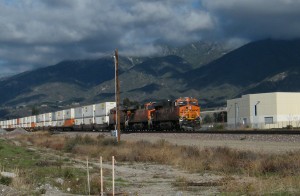 I soon found out why there were trains everywhere at the station, there were trains moving and held up everywhere “east” of the station! Within a mile I saw four trains, two moving and two waiting. This might be a great day after all! And the best part I noticed on my drive to San Bernardino was how brilliantly clear the day was. Yes, this would make for some great photos!
I soon found out why there were trains everywhere at the station, there were trains moving and held up everywhere “east” of the station! Within a mile I saw four trains, two moving and two waiting. This might be a great day after all! And the best part I noticed on my drive to San Bernardino was how brilliantly clear the day was. Yes, this would make for some great photos!
I make my stops at the spots I had found the previous Saturday and get some good photos of the BNSF special as well as various other BNSF and Union Pacific trains. I notice that I’m not the only one chasing this train, which is refreshing to witness; I’m not the only one running around with a camera getting looks of “why are you taking photos of a train?”
After getting back to San Bernardino five hours later, which turns out was over an hour behind schedule, I had the thought of going back over to San Timoteo Canyon to see what was happening on the Union Pacific. My thinking was that if Cajon Pass was this busy, surely San Timoteo Canyon would be! WRONG I camped out here for about 2.5 hours and only caught four trains. But, the last train was laying rail along the roadbed for replacement, so at least I found out why there wasn’t much traffic. And of course my camera batteries were dead, so I got to just watch the trains for the evening.
All in all, a successful Saturday and a successful chase. If I continue to do this sort of thing, I will most likely be looking into a better equipped vehicle for the task. As much as I like the Maxima, it’s getting along in age and miles, 240K actually. So who knows what the future holds there. But, until next month, I leave you with the photos of the chase. Enjoy!
|
Tom’s DVD of the Month Review |
|
| Title | Union Pacific’s Bailey Yard |
| Producer | Highball Productions |
| Format | DVD Wide Screen |
| Playing Time | 1 hr 50 min |
| Purchased From | Trainvideodepot.com |
| Date Purchased | 11/23/14 |
| Price Paid | $19.95 |
This review will be short and sweet. Well, short and not so sweet.
If you are thinking about buying this one, my advice is to save your money.
The first part of the video we are riding along on a tour bus with a UP employee describing what we are supposed to be seeing, but the problem is we are NOT seeing the things he is talking about. I guess the people on the bus might be able to see what he is talking about but the viewer of the video is not able to see it.
Too much of the video is shot at ground level and the viewer can only see what is in the foreground. The second part of the video is virtually devoid of narration.
The image quality is not very good.
I was very anxious to learn some things about Bailey Yard, but I learned almost nothing from watching this video. I had a hard time watching the whole thing and I kept checking to see how much more was left.
Skip this one!
